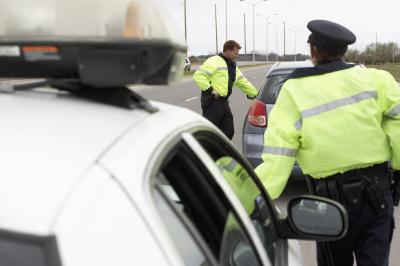
Many late model cars and trucks employ electronics to measure and record road speed, but a great number of other vehicles still rely on a cable to drive the speedometer. Motorcycles and base-model cars and trucks usually forgo electronic sensors and gauges in favor of the tried and true cable-driven systems. These type systems were the only ones in use, in any vehicle, for decades. The symptoms exhibited by a faulty speedometer cable are few in number, but blatantly obvious in operation.
Speedometers are often equipped with a pin that provides a resting spot for the meter needle when no forward speed is generated. Another pin at the far end of the meter prevents needle travel beyond the intended range. The needle is considered to be "pinned" when vehicle speed exceeds the range of the meter, or when the vehicle is stopped. A needle that lifts from its starting point, but drops back repeatedly when driving at a steady low speed, can be an indication of a speedometer cable malfunction. A defect in the cable, or lack of lubrication, can cause the cable to lope rhythmically at the onset of forward motion, regardless of the presence of meter pins. This symptom may seem to be alleviated at higher speeds, as cable rotation speeds overcome whatever resistance exists.
Other erratic actions of the speedometer needle may correctly raise concern for proper cable operation. The position of the needle may waver at higher readings, without exhibiting a lope at driveway speeds. The width of the wave may be reduced by acceleration, while the frequency escalates. The needle might seem to vibrate, rather than wave in this instance, but the blurred actions can still constitute cable failure symptoms. Audible clues that accompany errant needle movements range from occasional rhythmic squeaks to alarming squeals that seem to originate in the speedometer. Total failure of the cable or speedometer can result if these subtle malfunctions are not attended to quickly.
The speedometer cable resides in a tubular housing that attaches to a remote output device, and the speedometer. Typically, a gear in the transmission of a car or truck, or in the front wheel hub of a motorcycle, is spun at a calibrated rate. The gear drives the cable, and the rotations are relayed to, and interpreted by, the speedometer. Cable housings are meant to provide proper routing and a clean, lubricated environment for the spinning cable. The housing must be routed exactly as prescribed by the vehicle manufacturer. This prevents housing contortions that hinder cable movements, and ensures safe placement. Improperly routed housings could be smashed by a lift or jack, when raising the vehicle for some service procedure.
A derelict output device can cause erratic cable function, and any discrepancies in the housing may also mimic symptoms of a faltering speedometer cable. Conversely, an inferior cable can damage output devices, or internal speedometer components. Certainty may be obtained by lubricating the cable, and the procedure is commonly considered a normal maintenance practice, nevertheless. Removing the cable from the housing is the optimum method for lubricating and examining the entire length of the cable. Any kinks or frayed sections of the cable indicate the need for a replacement part, but effective repairs are typically accomplished through proper lubrication. Lubrication injectors offer an alternative method for distributing the required grease, when extracting the cable from the housing is difficult, or impractical.